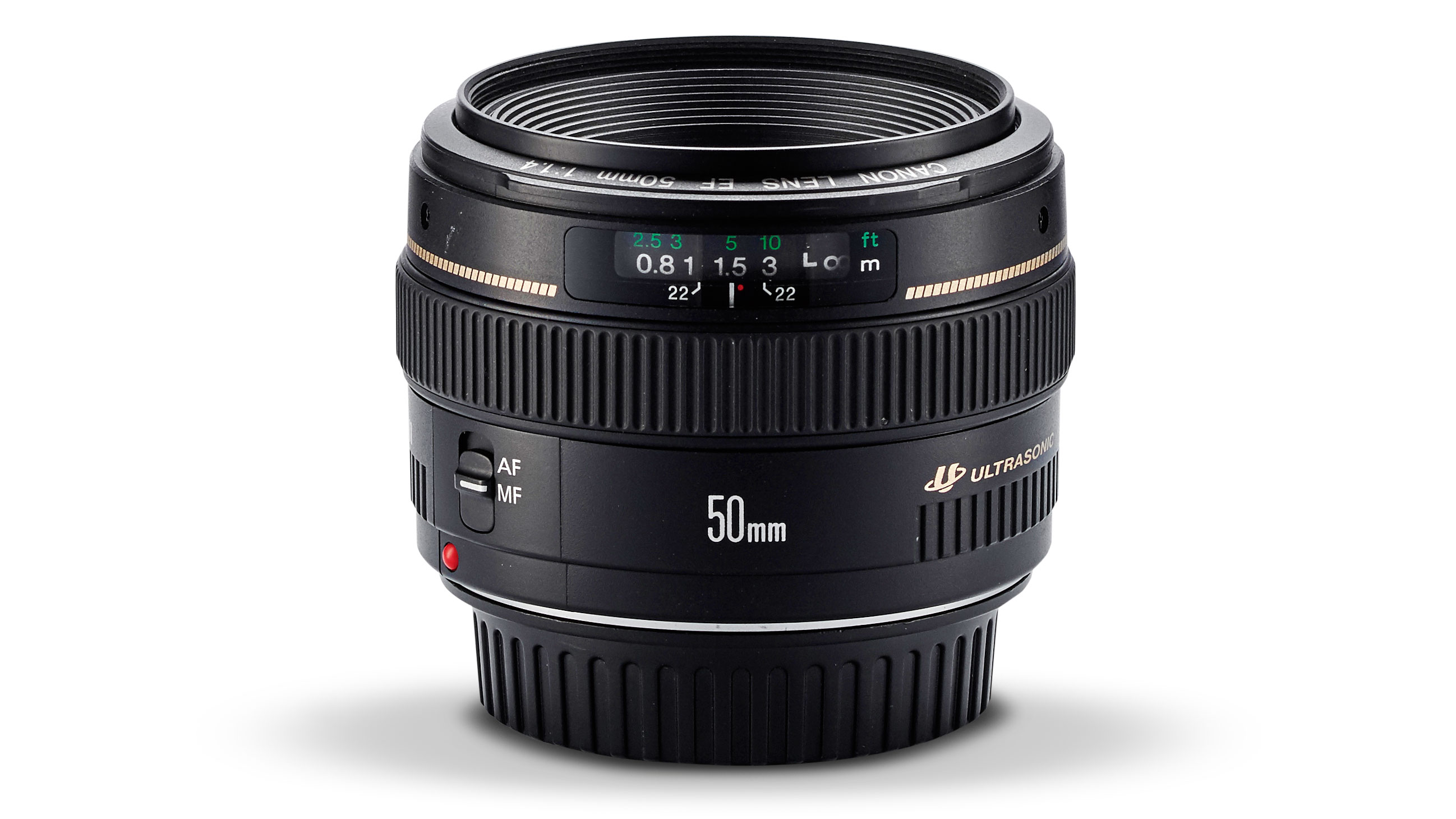Digital Camera World Verdict
It’s a solid lens with a great history, but this one is badly in need of an update and a revamp. Autofocus accuracy is hit-or-miss, especially when using the lens wide open to its full shallow-depth-of-field potential. Sharpness is a little poor and there are some vignetting issues. There are a fair few things to like, such as full-time manual overdrive of autofocus, but overall this is a lens that has been outclassed by rivals and needs an update.
Pros
- +
Extremely lightweight build
- +
Full-time manual focus override
Cons
- -
Significant autofocus issues
- -
Vignetting and poor sharpness
Why you can trust Digital Camera World
A real veteran in Canon’s line-up, the Canon EF 50mm f/1.4 USM lens is 25 years old. It’s only about half the physical length of competing Sigma and Zeiss 50mm lenses, and just a third of the weight. That’s naturally a good thing for all of us who don’t like being weighed down by big, heavy lenses. The downside is that the lens feels basic, and a lightweight in features and performance.
The fact that it’s a ‘USM’ lens might sound like good news, but autofocus is based on an ultrasonic motor rather than being a ring-type system. It’s certainly not as quick or as whisper-quiet as the AF systems in many comparable lenses. On a plus point, this lens is unusual for a Micro USM system, in that it features full-time manual overdrive of autofocus.
Little luxuries include a focus distance scale which is absent on the more affordable Canon 50mm f/1.8 lens, and its aperture rating is two-thirds of an f-stop faster. This enables the use of a tighter depth of field, but that comes with its own perils in terms of performance.

Performance
In numerous samples of this lens that we’ve tested, autofocus accuracy has tended to be rather hit and miss. Sometimes it’s okay, but more often it’s not. The problem is particularly noticeable when shooting wide-open, where the depth of field is incredibly small and you need all the focusing precision you can get. Even when perfectly focused, sharpness is quite poor unless you stop down to at least f/2.8. Vignetting is also quite severe and, overall, it’s a lens that’s long overdue an update to bring it back up to snuff.
It bears a 58mm filter thread – larger than that of the Canon 50mm f/1.8 lens, which is 49mm. Overall it has a better, more durable build than the 50mm f/1.8, though it’s worth noting that there are still not weather seals – another point on which the lens could use an update.
Read more:
The best camera deals, reviews, product advice, and unmissable photography news, direct to your inbox!
Best wide-angle lenses for Canon
Matthew Richards is a photographer and journalist who has spent years using and reviewing all manner of photo gear. He is Digital Camera World's principal lens reviewer – and has tested more primes and zooms than most people have had hot dinners!
His expertise with equipment doesn’t end there, though. He is also an encyclopedia when it comes to all manner of cameras, camera holsters and bags, flashguns, tripods and heads, printers, papers and inks, and just about anything imaging-related.
In an earlier life he was a broadcast engineer at the BBC, as well as a former editor of PC Guide.


